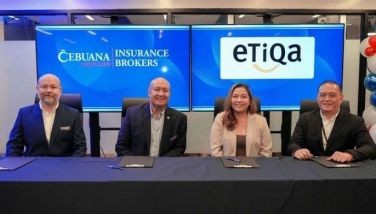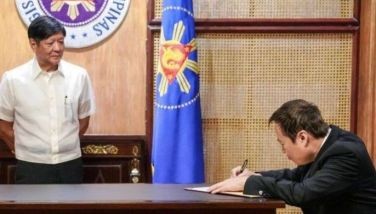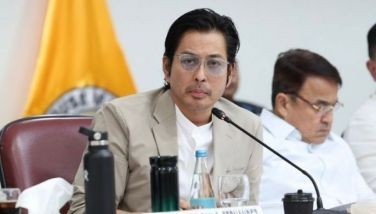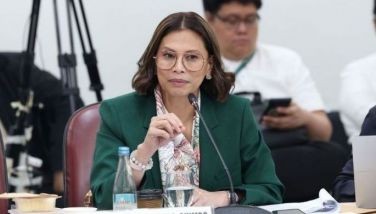The road paved with good intentions
I was invited as a panelist in a recent Philippine Loan Market Conference and our topic was Financing the Philippines’ Energy Transition. It was a great panel but I also said something that may have have caused some discomfort (and possibly quiet agreement) among the audience when I said that I am all for financing renewables, but the problem is that we are not giving any incentives to build baseload and we may end up with power shortages.
My colleague, Gabe, and I then decided to look at the DOE data as well as the deals we were financing to determine if my statement was foolish or actually a dire warning of the future.
Under the Department of Energy’s (“DOE”) latest Philippine Energy Plan (“PEP”) Reference Scenario and Clean Energy Scenario, there is a target of 35 percent - 50 percent renewable energy share in generation mix by 2040. For us non-engineers, this means that we need to build around 2.5 GW of renewable energy annually and 1 GW of baseload plants.
In support of the thrust of the government, various financial institutions and corporations have provided their respective commitments towards this goal with BDO Unibank, Inc. at the forefront with its Sustainable Energy Finance program as early as 2010 in partnership with the International Finance Corporation. Since then, BDO Unibank, Inc. has supported over 50 projects accounting for over 2 GW worth of renewable energy through various financing both through its lending activities or capital market fundraising through BDO Capital & Investment Corp. such as the various issuances of San Miguel Global Power, ACEN Corp. , Alternergy Holding Corp. , and most recently, Energy Development Corp.’s bond and Citicore Renewable Energy Corp.’s initial public offering.
BDO as a group has stood at the forefront in supporting companies as they look to reach their energization target such as ACEN’s 20 GW by 2030 or Citicore’s 5 GW in 5 years and even other RE players hoping to participate in the government’s Green Energy Auction Program with over 3 GW in capacity for auction and delivery per year. And even after this, it still begs the question, is energization from purely green means enough to propel Philippines into growing.
As we draw closer to the DOE’s 2040 target, we take a step back to assess how close or far the target is with a back-of-the-envelope calculation on what it takes to reach the goal. Should GDP grow at this pace of six percent p.a. and holding constant the electricity-to-GDP ratio, 2040’s GDP would need to consume three times of 2022’s gross power generation or nearly 320,000 GWh. Considering in 2022 installed capacity attributable to RE of 8.3 GW produced that 24,684 GWh, an oversimplified translation would need roughly 53 GW of RE installed capacity by 2040 or an additional 45GW or 2.5 GW per year from 2022 to 2040 to get to that 50 percent RE mix by 2040.
This is not exactly far from DOE PEP’s projection that to get 35 -50 percent renewable energy mix since an additional 45.6 to 73.9 GW may be needed to reach these goals.
On top of the sheer amount of renewable energy plants to be built, the power demand cannot be purely supported by additional installed capacity from RE sources since the other side of the equation or the other 50 percent woul need to grow as well. Under the same computation flow above, an additional 17GW or nearly 1 GW annually of installed capacity from coal, natural gas or oil based would need to be developed to power the 2040 energy demand. This analysis does not begin to factor in that there are three kinds of power, namely baseload, mid-merit and peaking. With current technological limitations, renewable energy is predominantly used to power peaking power and, at best, mid-merit. Without coal, natural gas and oil based, as well as LNG, there will be a shortage in baseload power to support the base power requirements of the country. As currently constructed, thermal sources of power are more efficient in producing power on a more consistent basis.
True that this road is paved with good if not great intentions and maybe with solar-powered street lights and EV cars running through it. But the reality is the sun does not shine 24/7, 365 days a year, the wind doesn’t blow strong in every spot from Aparri to Tawi-Tawi nor does every river flow strong enough to generate enough power to replace baseload. With every financial institution supporting the ESG thrust of every client, the current pipeline may be enough to reach the target installed capacity to meet DOE targets, but what happens to the other 50 percent of that target?
With the current coal moratorium in place since 2022 and delays in development of LNG as the next man up to provide base load, what would the country’s main baseload source would be as Malampaya supplies diminishes? True that LNG depots are being built, but other than the SMCGP, Aboitiz Power and Mgen integrated LNG facility that should generate 2,500 MW and Batangas Clean Energy’s 1,200 MW where will these next sets of generation plants be built and when will these come online?
The harsh reality is that potential renewable alternatives to baseload may not be easily constructed in the next five years, for like offshore wind which we understand is 3-5 times more expensive than onshore wind. We have also spoken to several nuclear manufacturers and had discussions with regulatory and several conglomerates but nothing concrete is in place.
Even with battery energy storage systems to help augment power from renewable sources are already being developed, this approach primarily remains expensive and struggles in commercial viability. Perhaps the DOE can require all new renewable energy plants to build BESS and provide a subsidy or tariff for that? The grid is not in the best condition since various yellow and red alerts in the grid have been announced in the past 30 days especially at the height of El Niño.
As it is, there is no clear sight on incremental growth of the other side of the 50 percent target nor is there an immediate replacement for coal-powered baseload. There is a need to get clarity about what is the next source of baseload and the timing of these developments. Should one day we wake up and realize that the replacement isn’t coming yet, would we not wish that we built a thermal plant sooner? Can we consider a temporary lifting of the coal moratorium like how Europe addresses their power shortage to bridge that gap until such time the replacement has been constructed? While the green road that the Philippines is currently treading supports sustainability, ensuring that our power supply can provide the necessary baseload support is a must to ensure continued economic progress and avoid a possible dark (literally) future.
Written by Eduardo Francisco and Gabriel Edjawan of BDO Capital & Investment Corp. To learn more about SharePHIL, visit https://bit.ly/m/sharephil
- Latest
- Trending



























